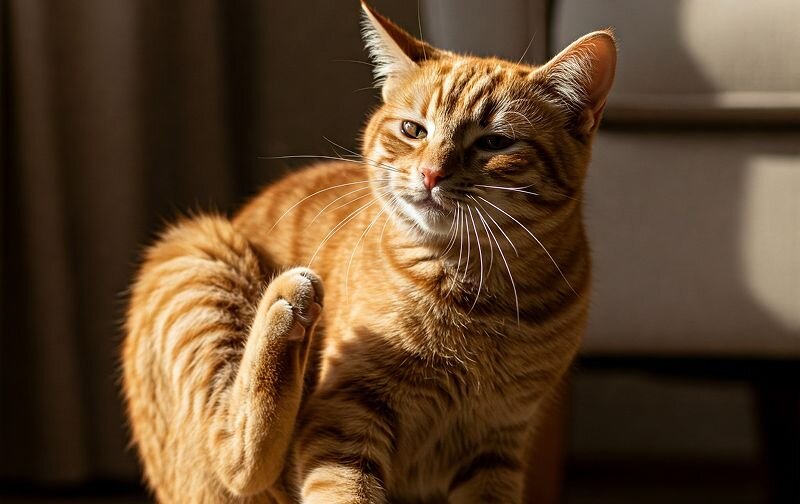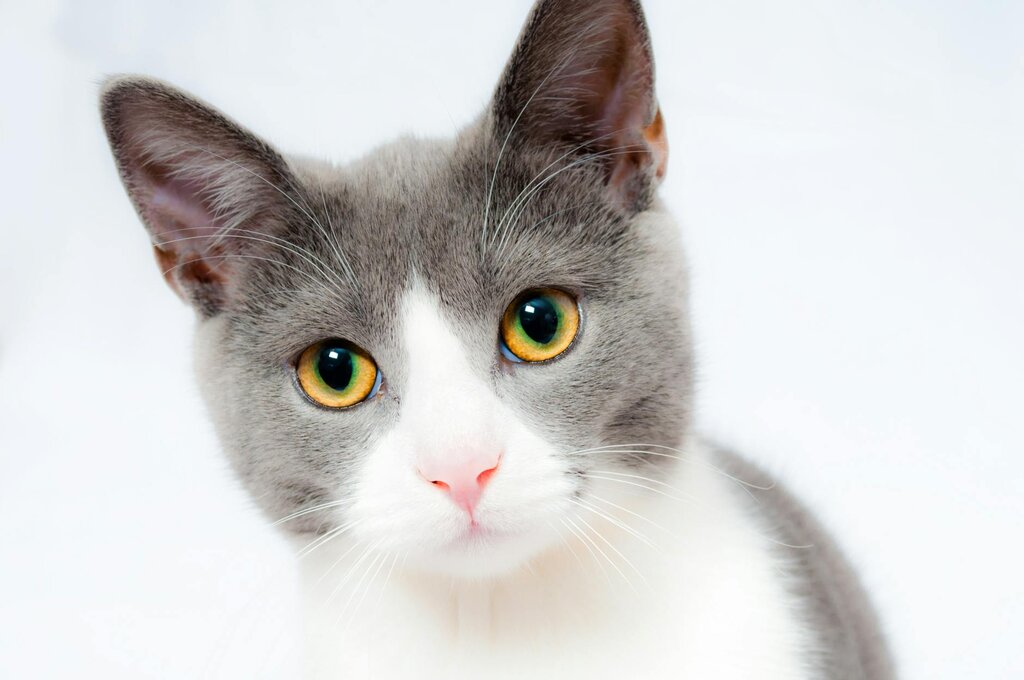In the majority of cases, dandruff occurs due to environmental factors or secondary to an underlying skin, nutritional, age-related or hormonal condition. Via various mechanisms these underlying conditions interfere with the normal life cycle of skin cells, or cause irritation to the skin.
Dandruff can occur due to the following:
Poor nutrition: Poor quality diets are a common culprit, as well as diets lacking in omega fatty acids or vitamin A - both of these compounds are vital contributors to overall skin health.
Allergies: Flea allergy dermatitis, food allergies, contact allergies and airborne allergies can all cause itching and/or overgrooming, which traumatises skin cells and causes dandruff. To learn more, take a look at the Common Causes of Itching in Cats.
Parasites: Ringworm, mites and lice can all cause dry flaky skin, itching, and dandruff.
Poor grooming: If a cat is unable to groom themselves properly, for example due to age, pain, arthritis or obesity, dry skin and dandruff may become apparent. In these cases, tricky to reach areas like the lower back and base of the tail tend to be most affected.
Age: Older animals can experience age-related changes to the life cycle of their skin cells, which may naturally predispose them to dandruff.
Environmental conditions: Both low humidity and excessive heating can cause dry skin, irritation and flaking.
Hormonal disorders: Hormonal disorders such as hyperthyroidism or diabetes affect the quality of the coat and may also alter grooming habits.
Other rarer skin conditions including autoimmune diseases such as pemphigus or lupus can cause dandruff.
Much less commonly, dandruff occurs due to a primary disorder, rather than secondary to another condition. Primary disorders are rare, often have a genetic basis, and tend to become apparent by the time the cat is 2 years of age. These causes are generally a diagnosis of exclusion, which means all other possibilities first need to be ruled out. One example is primary seborrhoea which is a genetic condition that Persian cats are predisposed to.



